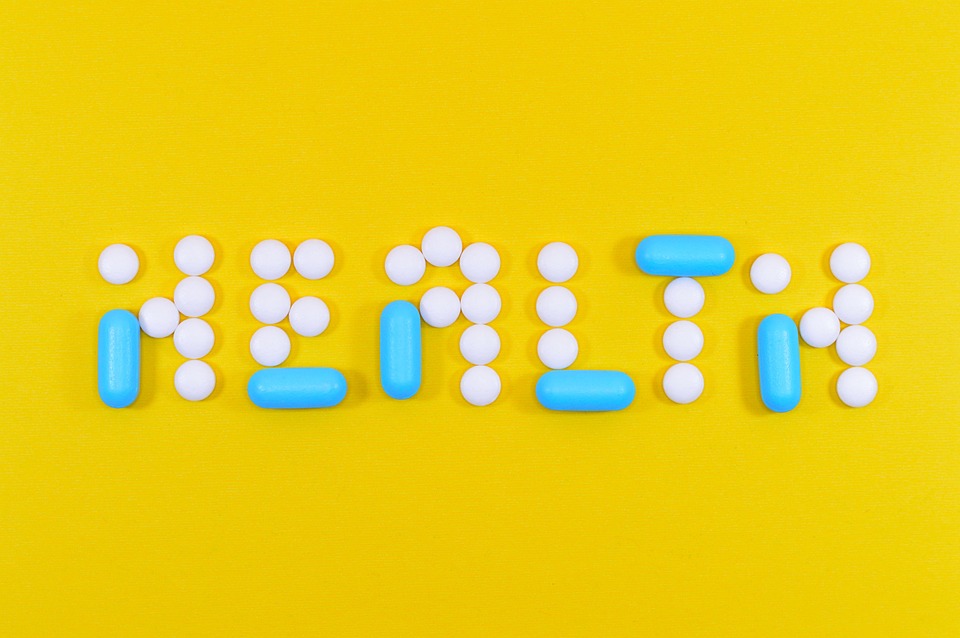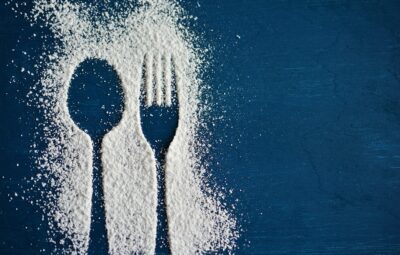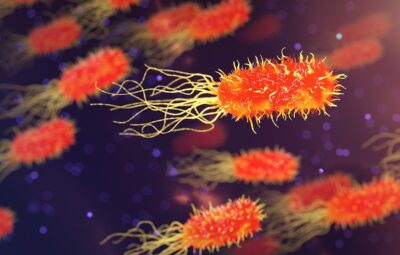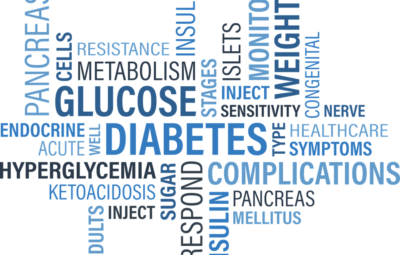According to the government and the National Health Service (NHS), eating a well-rounded diet should provide all of the necessary nutrients. Nevertheless, a new study has uncovered that vitamin deficiencies are widespread, regardless of age.
The recent NDNS, a governmental report outlining the dietary status of the country, took into account 11 essential vitamins and minerals and observed deficiencies in all.
The Department of Health is understandably not encouraging people to use vitamins and supplements as a substitute for a nutritious and balanced diet. Nevertheless, there are a great number of people that are not consuming a healthy diet, and this must be acknowledged and taken care of.
The findings of the survey revealed that a mere quarter of adults in their prime working years and only 10% of children reached the minimum number of servings of fruits and vegetables of 5 per day. This makes it apparent that folks are not getting the required nutrients to ensure their well-being.
Micronutrients with a Big Role in the Body
Micronutrients, which are composed of vitamins and minerals, are necessary for small doses to maintain bodily functions. If one is unable to obtain even limited amounts of something, it is almost sure to cause an illness. Here are a few examples of diseases that can result from vitamin deficiencies:
- Scurvy. Old-time sailors learned that living for months without fresh fruits or vegetables—the main sources of vitamin C—causes bleeding gums and listlessness of scurvy.
- Blindness. In some developing countries, people still become blind from vitamin A deficiency.
- Rickets. A deficiency in vitamin D can cause rickets, a condition marked by soft, weak bones that can lead to skeletal deformities such as bowed legs. Partly to combat rickets, the U.S. has fortified milk with vitamin D since the 1930s.
The absence of significant micronutrients can be damaging to your health, whereas consuming the right amount can be profoundly beneficial. Some examples of these benefits:
- Strong bones. A combination of calcium, vitamin D, vitamin K, magnesium, and phosphorus protects your bones against fractures.
- Prevents birth defects. Taking folic acid supplements early in pregnancy helps prevent brain and spinal birth defects in offspring.
- Healthy teeth. The mineral fluoride not only helps bone formation but also keeps dental cavities from starting or worsening.
The Difference Between Vitamins and Minerals
Vitamins and minerals are both micronutrients, yet they differ in their characteristics. Organic vitamins can be destroyed through exposure to heat, oxygen, or acid. Inorganic minerals retain their chemical composition.
So why does this matter? This implies that the minerals located in the soil and water can be directed into your body through the food, fish, animals, and beverages that you consume. It is more difficult to get important vitamins into your system from food and other sources because of the way they can be affected by the cooking process, how they are stored, and just being exposed to the air.
Interacting—in Good Ways and Bad
Many micronutrients interact. Vitamin D allows your body to absorb calcium from the food you eat rather than taking it from your bones. Vitamin C helps you absorb iron.
The interplay of micronutrients isn’t always cooperative, however. Vitamin C hinders the body’s capacity to take in the vital mineral copper. Having an excess of manganese can even make iron deficiency worse.
A Closer Look at Water-Soluble Vitamins
The water-containing portions of the foods consumed contain water-soluble vitamins. As digestion occurs and food is broken down, the nutrients they contain are taken in directly by the bloodstream, or they become available as a supplement dissolves.
A large portion of the human body is composed of water, which makes it easy for water-soluble vitamins to move around in the system. Your kidneys are constantly controlling the quantities of water-soluble vitamins in your body, sending out any additional amounts in your urine.
Water-soluble vitamins:
- B vitamins:
- Biotin (vitamin B7)
- Folic acid (folate, vitamin B9)
- Niacin (vitamin B3)
- Pantothenic acid (vitamin B5)
- Riboflavin (vitamin B2)
- Thiamin (vitamin B1)
- Vitamin B6
- Vitamin B12
- Vitamin C
What do they do?
Water-soluble vitamins have numerous functions in the body, but one of their primary roles is to unlock the energy present in dietary intake. Others help keep tissues healthy. Here are some examples of how different vitamins help you maintain health:
- Release energy. Several B vitamins are key components of certain coenzymes (molecules that aid enzymes) that help release energy from food.
- Produce energy. Thiamin, riboflavin, niacin, pantothenic acid, and biotin engage in energy production.
- Build proteins and cells. Vitamins B6, B12, and folic acid metabolize amino acids (the building blocks of proteins) and help cells multiply.
- Make collagen. One of many roles played by vitamin C is to help make collagen, which knits together wounds, supports blood vessel walls, and forms a base for teeth and bones.
Words to the Wise
It is not accurate to assume that water-soluble vitamins quickly exit the body, as some of them can linger for extended periods. It is likely that your liver contains a large quantity of vitamin B12 that will last for multiple years. Stores of folic acid and vitamin C can remain in the body for more than two days.
Typically, water-soluble vitamins should be replenished regularly, about every few days.
Be mindful that while taking in large volumes of some micronutrients through supplements may have its benefits, it may also cause detrimental effects. For instance, taking a huge quantity of Vitamin B6 – significantly more than the suggested dose of 1.3 milligrams each day for grown-ups – can damage nerve endings, causing a lack of feeling and muscle shortcomings.
A Closer Look at Fat-Soluble Vitamins
Rather than entering the bloodstream with ease like the majority of water-soluble vitamins, fat-soluble vitamins gain access to the blood via lymph ports located in the gut wall. Vitamins that can be dissolved in fat are accompanied by proteins that serve as escorts as they move through the body.
Fat-soluble vitamins:
- Vitamin A
- Vitamin D
- Vitamin E
- Vitamin K
What do they do?
This set of four vitamins assists in maintaining the health of your eyes, skin, lungs, gut, and nervous system. Here are some of the other essential roles these vitamins play:
- Build bones. Bone formation would be impossible without vitamins A, D, and K.
- Protect vision. Vitamin A also helps keep cells healthy and protects your vision.
- Interact favorably. Without vitamin E, your body would have difficulty absorbing and storing vitamin A.
- Protect the body. Vitamin E also acts as an antioxidant (a compound that helps protect the body against damage from unstable molecules).
A Closer Look at Major Minerals
The body needs to keep a substantial quantity of the primary minerals and also store them. The trace minerals are as essential to your health as the other minerals. However, the latter is in your system in more sizeable quantities.
Major minerals travel through the body in various ways. An illustration of this is Potassium, which is quickly taken up in the blood, just like a type of water-soluble vitamin, and circulates through the body before being removed by the kidneys. Calcium has many of the same characteristics as a fat-soluble vitamin in that it needs a transporter to be taken in and moved around the body.
Major minerals:
- Calcium
- Chloride
- Magnesium
- Phosphorus
- Potassium
- Sodium
- Sulfur
What do they do?
One of the major responsibilities of minerals is to ensure that the water content inside the body is kept in equilibrium. The primary roles are carried out by sodium, chloride, and potassium. Aside from the three big minerals, calcium, phosphorus, and magnesium are essential for strong bones. Sulfur aids in the maintenance of the protein structures in hair, skin, and nails.
Words to the Wise
Excessive amounts of one key mineral can lead to a scarcity of another. Imbalances of this kind are often the result of taking too many supplements rather than eating enough wholesome foods. Here are two examples:
- Salt overload. Calcium binds with excess sodium in the body and is excreted when the body senses that sodium levels must be lowered. That means that if you ingest too much sodium through table salt or processed foods, you could end up losing needed calcium as your body rids itself of the surplus sodium.
- Excess phosphorus. Likewise, too much phosphorus can hamper your ability to absorb magnesium.
So how do you reckon you’re fairing with your vitamin and mineral intake? Here is a breakdown of the key vitamins.
Vitamin A
What does it do?
Vitamin A sometimes goes by the name retinol. It is necessary to sustain one’s sight, skin condition, robust bones, and immune defense. Vitamin A functions as an antioxidant to assist the skin in repairing itself, keeping it hydrated, and produce compounds that help secure collagen production. Retinol, which may be labeled as stabilized retinol, is frequently found in skin care products. If you want strong, shiny hair, it’s important to remember that Vitamin A is great for your hair health!
Where can you get it from?
Liver, full-fat dairy, spinach, broccoli, tomato juice, peppers, and watercress all contain Vitamin A. Keep an eye out for anything that is orange as a reminder to consider vitamin A. Fruits such as mango and dried apricots, as well as vegetables like butternut squash, carrots, sweet potatoes and pumpkin, all possess either vitamin A or beta-carotene, which is metabolized into this vitamin when ingested.
How much do you need?
Women need 0.6mg a day, and men need 0.7mg.
Vitamin D
What does it do?
Vitamin D plays a vital role in maintaining strong bones, teeth, and muscles. The accumulation of proof shows that vitamin D is significant for the immune system and is capable of shielding against type 2 diabetes, multiple sclerosis, and certain kinds of cancers.
Where can you get it from?
The key source of vitamin D is sunlight. When exposed to sunlight, your body is able to produce vitamin D on its own. From September to March or April, not enough sunlight is available for making vitamin D, so it is essential to obtain it through dietary sources or a supplement. Some foods that offer a bit of vitamin D are seafood like salmon and tuna, meat like beef and lamb, liver, egg yolks, and foods that have been supplemented with essential vitamins like some yogurt and cereals.
How much do you need?
Public Health England recommends that everyone, including pregnant and breastfeeding women, take a 10 mcg vitamin D supplement daily during the autumn and winter months. NHS Choices suggests that all adults and children, including breastfed babies, should think about taking a supplement of 10 mcg of vitamin D daily.
Riboflavin
What does it do?
Riboflavin is also known as vitamin B2. Consistent health necessitates having the necessary components functioning properly for our skin, eyes, and nervous system. B vitamins, including this one, are part of energy transformation processes, and it has been discovered to be a factor in how iron metabolism is regulated.
Where can you get it from?
Some nutritional sources include dairy products like milk and yoghurt, poultry like turkey, and eggs, in addition to legumes like soybeans and other soy-based foods. Leafy greens such as spinach and kale are terrific sources of vitamin B2.
How much do you need?
Men need 1.3mg a day, and women 1.1mg.
Calcium
What does it do?
Calcium is needed to keep bones and teeth strong and to help process carbohydrates. Therefore, it is possible that not having enough of this mineral can raise the possibility of acquiring pre-diabetes.
Where can you get it from?
Milk and other dairy products, soy, broccoli, cabbage, and various types of nuts are all sources of nutritious food.
How much do you need?
It is recommended that adults consume 700mg of something daily, and women are encouraged to up their intake prior to menopause.
Iron
What does it do?
Iron is needed in order to create hemoglobin, which has the responsibility of bringing oxygen to different parts of the body. This makes it indispensable for conserving power.
Where can you get it from?
Red meat is the best source for getting iron because it contains haem iron, which is more easily taken in by the body than the non-haem iron derived from vegetables like dried fruit and dark green leafy greens.
How much do you need?
Women need 14.8mg a day, and men 8.7g.
Iodine
What does it do?
The body requires iodine in order to create thyroid hormones. These hormones regulate the body’s metabolism and a lot of other essential functions. The body necessitates adequate amounts of thyroid hormones during pregnancy and infancy in order to ensure the proper development of both the bones and the brain.
Where can you get it from?
Seaweed is the best way to get iodine in your diet, yet milk and dairy are the primary contributors to iodine consumption in the UK. Interestingly, organic milk has about 40% lower levels in comparison to regular milk.
How much do you need?
Adults need 0.14mg a day.
Magnesium
What does it do?
Magnesium is needed for the correct functioning of more than 300 enzymes, which manage numerous chemical activities inside the body, for example, protein formation, muscle and nerve activities, blood glucose levels, and controlling blood pressure. Magnesium is essential for keeping bones strong and assisting in the metabolism of food into energy.
Where can you get it from?
Foods that are found in one’s diet include dark green veggies, nuts, seafood, animal protein, and dairy.
How much do you need?
Men need 300mg a day and women 270mg
Potassium
What does it do?
Potassium can help lower your blood pressure. The mineral has the effect of causing the kidneys to get rid of spare sodium, so the overall sodium quantity is reduced, which in turn decreases blood pressure. This substance acts as an electrolyte, which aids the cells in preserving an equilibrium of liquid.
Where can you get it from?
Food sources include bananas, pulses, beef, nuts, and seeds
How much do you need?
Adults need 3,500mg a day.
Selenium
What does it do?
Selenium is necessary for propagating, keeping the thyroid functioning optimally, forming DNA, and defending the body against harm created by free radicals and germ exposure.
Where can you get it from?
The UK has a lower amount of selenium in its soil compared to other nations, meaning that homegrown British wheat and vegetables are not as nutritious as imported ones from the United States and Canada.
You can get plenty of selenium from Brazil nuts, mussels, lobster, shrimp, tuna, swordfish, and mackerel.
How much do you need?
The National Health Service suggests that males should consume 0.075 milligrams of something each day and females ought to have 0.06 milligrams.







